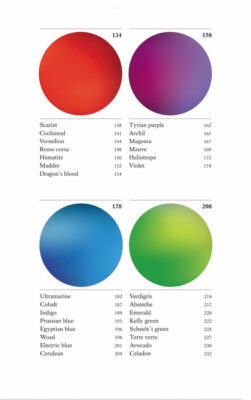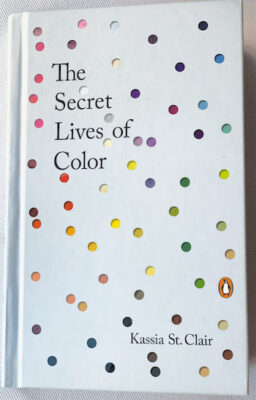About color: It’s a power that ‘directly influences the soul’
 Kandinsky wrote the headline above, more or less. When I think of the artist (1866-1944) though, I think of his book “Concerning the Spiritual in Art.” The young Georgia O’Keeffe restlessly awaited the English translation of that book; it finally was published in 1914.
Kandinsky wrote the headline above, more or less. When I think of the artist (1866-1944) though, I think of his book “Concerning the Spiritual in Art.” The young Georgia O’Keeffe restlessly awaited the English translation of that book; it finally was published in 1914.
Kandinsky writes about color and form and music and literature. His book had an outsize influence on modern art, and its brilliance shines yet today.
Since antiquity, people have thought and written about color and/or cooked up color systems. Sir Isaac Newton devised the first color wheel; the philosophers Goethe and Wittgenstein wrote about color; the American painter Alfred Munsell developed a system where color was definable and measurable.
Colors are rooted in science but also in ideas and sociocultural constructs.
The color green
The Western world’s best-known living painter, former Anglo-Angeleno (and now resident of France) David Hockney, writes in defense of olive green: “I don’t believe there are ‘off-putting’ colors.”
And neither does the English writer Kassia St. Clair, author of the delightfully written and beautifully designed book, “The Secret Lives of Color” (2017, Penguin Books).
St. Clair’s book, though, deals less with the spiritual and more with the corporeal.

SOME OF THE SHADES noted in the book.
To wit, the color mummy. Here is St. Clair’s first full paragraph on the origins of the color:
“On July 30, 1904, [color manufacturers] O’Hara and Hoar placed an unusual advertisement in the Daily Mail. What they wanted — ‘at a suitable price’ — was an Egyptian mummy. ‘It may appear strange to you,’ the notice read, ‘but we require our mummy for making color.’ Then, to stave off any pricks of public conscience, they continued: ‘Surely a 2,000-year-old mummy of an Egyptian monarch may be used for adorning a noble fresco in Westminster Hall or elsewhere without giving offense to the ghost of the departed gentleman or his descendants.’”
This book is catnip. (Catnip is grayish-green. Using two points of reference in St. Clair’s book, it might be a cross between celadon and avocado flesh.)
St. Clair’s book is the story of 75 “shades” that have intrigued her the most. Just a little reading in the morning can set one up for delight and wonder for the day. (But tackling her bibliography may take a decade.)

BOOK explores 75 shades that most intrigued the author.
Reds
Take the reds, as examples: scarlet, cochineal, vermilion, rosso corsa, hematite, madder, dragon’s blood.
On February 8, 1587, just before Mary, Queen of Scots was executed, she removed her dun-colored outer dress to reveal a “bright scarlet undergown.” To her supporters, the scarlet represented her Catholic faith; to her enemies, it meant she was a scarlet woman.
The subject of color
The subject of color in reality, history and folklore is never-ending.
Orange?
Kandinsky writes, “Orange is like a man convinced of his own powers.”
St. Clair’s orange choices: Dutch orange, saffron, amber, ginger, minium, nude.
Minium! It was lead tetroxide. It was used in the delicate labor of illuminated manuscripts in the 14th century near where Armenia is now. “First,” St. Clair writes, “scribes would have copied the text, carefully leaving space for the paintings, and then a team of artists would have begun their work. If the team that worked on the volume was large enough, it would have been the sole responsibility of one person to add the capitals, headings, and pilcrows (¶) in a particular shade of orange-red so bright that they leapt off the page.
“The person who worked with it was called a miniator, and his work, an eye-catching symbol or heading in a manuscript, was called a ‘miniatura.’”
From the 11th century on, vermilion made minium old-fashioned.
N.B. The author would like to thank Cheryl Lerner for giving her this book.
Ed. Note: The Larchmont Chronicle would like to thank “Home Ground” writer Paula Panich for six years of columns as she commences a sabbatical to write a book about the Takach Press (see September and October 2019 “Home Ground” columns).
COLORS also are the subject of this month’s “Word Café” column on page 11 of this section.
Category: Real Estate
